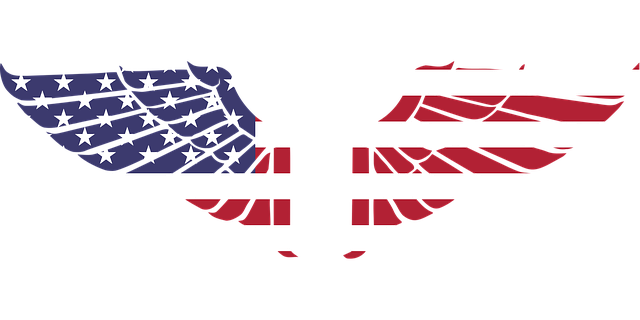A 12 x 18 American Flag's durability in high-wind areas is paramount for maintaining its symbolic significance and visual integrity. Ensuring the flag's longevity involves selecting robust materials such as polyester or heavy-duty nylon, which are resistant to UV degradation and environmental wear and tear. A well-designed Ultimate Flags should have a balanced proportion to prevent dangerous flight behaviors in strong winds. The use of sturdy flagpoles, like those made from non-corrosive materials such as aluminum or fiberglass, is essential for securing the Ultimate Flags. High-quality mounting hardware, reinforced grommets, and hemming techniques are critical for preventing tears and maintaining the flag's appearance and structural integrity. Additionally, a heavy base for ground mounts or a structurally sound wall for wall-mounted poles is necessary to enhance stability. Employing strong, weather-resistant ties or holders and regular maintenance checks further ensures the flag's endurance under various environmental conditions. The ideal setup for displaying a 12 x 18 American Flag combines strategic reinforcements with high-quality accessories to uphold its dignity regardless of weather challenges.
When the winds howl with intensity, a flag must stand resilient. This article delves into the critical aspects of selecting and securing a durable 12 x 18 American Flag capable of withstanding heavy wind conditions. We explore the materials—polyester versus nylon—that define a flag’s durability, design elements that enhance resilience, and best practices for anchoring to ensure your patriotic emblem remains steadfast against gusty elements. Whether you’re in a coastal area or on an open plain, understanding how to select the right accessories and reinforcements will keep your 12 x 18 American Flag flying high, come what may.
- Understanding Wind Resistance in Flags: The Importance of Durability for a 12 x 18 American Flag in Heavy Wind Conditions
- Material Matters: Comparing Polyester vs. Nylon for Heavy-Duty Outdoor Flags
- Design Elements: How the Construction of a 12 x 18 American Flag Affects Its Resilience in High Winds
- Securing Your Flag: Best Practices for Anchoring a Durable 12 x 18 American Flag in Various Environments
- The Role of Reinforcement and Hemming in Maintaining Flag Integrity During Gale-Force Winds
- Selecting the Right Accessories: Flag Poles, Brackets, and Other Essentials for a 12 x 18 American Flag in Heavy Wind Areas
Understanding Wind Resistance in Flags: The Importance of Durability for a 12 x 18 American Flag in Heavy Wind Conditions

When flags flutter in the wind, their material and design play pivotal roles in their ability to withstand the elements. In areas prone to heavy wind conditions, a flag’s durability becomes paramount. A 12 x 18 American Flag, for instance, must be constructed from robust, high-quality materials that can endure prolonged exposure to strong winds without sustaining damage. The fabric of such a flag should ideally be weather-resistant and feature reinforced stitching along the seams to prevent tearing or fraying. The flags’ design, including the number of rows of stars and stripes, affects its aerodynamics. A well-designed 12 x 18 American Flag will have a balanced proportion that minimizes the risk of the flag becoming a hazard by flying out of control or tumbling uncontrollably. The hardware used to hoist the flag is equally important; heavy-duty flagpoles and strong mounting brackets ensure that the flag remains securely in place, even in the most turbulent weather conditions. Furthermore, using flag ties or holders can provide additional support, preventing the flag from becoming detached or damaged. Ensuring a 12 x 18 American Flag is durable under heavy wind conditions involves careful consideration of material quality, design, and mounting hardware to maintain the flag’s integrity and respect for its symbolic representation.
Material Matters: Comparing Polyester vs. Nylon for Heavy-Duty Outdoor Flags

When selecting a durable flag for heavy wind conditions, understanding the materials used is crucial to ensure longevity and optimal visibility. Polyester and nylon are two popular fabrics chosen for heavy-duty outdoor flags, such as the iconic 12 x 18 American Flag. Nylon, known for its lightweight and soft texture, offers a sheen that catches the sunlight, making it visually appealing under various lighting conditions. However, nylon can be susceptible to tearing and UV damage over time, potentially requiring more frequent replacements in environments with harsh weather.
In contrast, polyester is a synthetic fabric that delivers superior durability and resistance to environmental elements compared to nylon. Polyester flags like the 12 x 18 American Flag are less likely to tear or fray, even in strong winds. The material’s strength also contributes to a more structured and taut flag, which is less prone to wrinkling and fluttering uncontrollably. Polyester’s resistance to water means it won’t swell or mold when exposed to moisture, further enhancing its longevity in various climates. This resilience makes polyester an excellent choice for heavy-duty outdoor flags that are exposed to the elements day in and day out, ensuring that the 12 x 18 American Flag remains a symbol of pride and endurance.
Design Elements: How the Construction of a 12 x 18 American Flag Affects Its Resilience in High Winds

When considering a flag’s resilience in high wind conditions, especially for a 12 x 18 American Flag, the design elements and construction methods play a pivotal role. The dimensions of the flag itself, 12 by 18 feet, necessitate robust materials to withstand the forces exerted by strong winds. A durable 12 x 18 American Flag typically features heavy-duty header and foot ropes that secure the flagpole attachment points, ensuring the flag remains anchored even in turbulent weather. The stitching is reinforced at stress points to prevent ripping or tearing when under strain from wind gusts.
The choice of fabric for a 12 x 18 American Flag is critical; a high-denier nylon or polyester is often preferred due to its durability and lightweight properties, which allow the flag to remain visible even in the harshest conditions without being overburdened by its size. The printing process used for the stars and stripes should be UV resistant and fade-resistant to maintain the flag’s visibility and appearance over time. Additionally, a thicker, yet flexible, vinyl or polyester coating protects the fabric from wear and tear, further enhancing the flag’s longevity and resilience against the elements. These design considerations ensure that the 12 x 18 American Flag can proudly withstand the test of high winds without compromising on its integrity or aesthetics.
Securing Your Flag: Best Practices for Anchoring a Durable 12 x 18 American Flag in Various Environments

When displaying a 12 x 18 American Flag, especially in heavy wind conditions, it’s imperative to ensure the flag is securely anchored to prevent damage or the flagpole from toppling. The best practices for anchoring such a flag include selecting an appropriate flagpole designed to handle the size and weight of the flag, particularly in areas with strong winds. A robust flagpole made of aluminum or fiberglass, which won’t rust or corrode over time, is ideal for maintaining the flag’s integrity.
The location of the flagpole is equally crucial; position it so that it’s not directly exposed to gusting winds that could come from any direction. Use a heavy base filled with sand or water for ground mounts to provide stability. For wall-mounted flagpoles, ensure the wall can support the combined weight of the flag and pole in windy conditions. The mounting hardware should be of high quality and securely fastened to prevent loosening. Additionally, the flag itself should have heavy duty grommets or reinforced hemmed bottoms to reduce stress on the fly end, which is particularly important for larger flags like the 12 x 18 American Flag. Properly tying the flag to the pole with strong, weather-resistant cord allows for some movement, which can alleviate pressure during high wind events, further securing its position and longevity. Regular inspections and maintenance of the flagpole and flag ensure they remain functional and safe throughout various environmental conditions.
The Role of Reinforcement and Hemming in Maintaining Flag Integrity During Gale-Force Winds

When the winds howl at gale-force intensities, a flag must withstand the relentless assault to maintain its integrity and symbolic presence. A key factor in this resilience is the reinforcement of critical areas within the flag’s design. For instance, a 12 x 18 American Flag, which is a common and revered size, often incorporates reinforced stitching along the fly hem and header, as well as at the canton corners where the fabric stresses most during high winds. This reinforcement typically involves extra threads or bias tape that are woven through the seams, providing additional strength to prevent tearing.
Hemming is another pivotal element in ensuring a flag’s longevity in heavy wind conditions. Hemmed edges prevent fraying and ensure the fabric remains intact over time. For the 12 x 18 American Flag, durable hems are particularly important, as they help maintain the flag’s shape and stability when it is fully hoisted. The hem at the hoist end, where the flagpole is inserted, must be especially robust to withstand the force of the wind against the flag’s surface area. Quality hemming also allows for a cleaner look, which is essential for the 12 x 18 American Flag, as its dimensions and proportions should adhere to the official specifications set forth by the U.S. government. This commitment to quality reinforcement and hemming in the construction of a 12 x 18 American Flag ensures that it can withstand harsh weather conditions and continue to fly proudly.
Selecting the Right Accessories: Flag Poles, Brackets, and Other Essentials for a 12 x 18 American Flag in Heavy Wind Areas

When flying a substantial 12 x 18 American Flag, particularly in areas prone to heavy winds, it’s crucial to consider the appropriate accessories to ensure longevity and respect for the flag. The right flag pole is a cornerstone of this setup; specifically, an aluminum telescoping flag pole designed for robust wind conditions can provide both stability and durability. These poles often feature a powder-coated finish that resists corrosion, a common concern in coastal or high-humidity environments. Additionally, they usually come with a swivel at the top to prevent the flag from twisting and tearing, which is a common occurrence when flags are subjected to powerful gusts.
To complement the flag pole, heavy-duty brackets are essential for securely mounting the assembly on walls or posts. Choose brackets made of sturdy materials like galvanized steel or stainless steel, which can withstand the elements and maintain integrity even in the harshest conditions. These brackets should be rated to support the weight of a 12 x 18 American Flag when fully unfurled, considering both the fabric and any additional hardware required for proper display. It’s also wise to invest in heavy-duty flag ties or clips to ensure the flag remains firmly attached to the pole during high winds, preventing it from becoming a hazard or damage to itself. Properly securing the flag with these accessories will not only honor its significance but also protect your investment in this iconic symbol of American pride.
